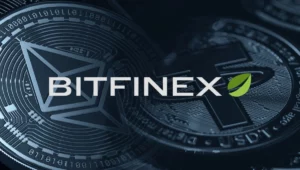
In a surprising twist, it’s not the early crypto adopters or influencers who are carrying the torch of decentralization anymore—it’s Wall Street. Over the past few months, a growing number of traditional financial institutions have started to adopt and promote core crypto principles like decentralization, transparency, and immutability. Meanwhile, many in the crypto community seem to be moving away from these ideals in favor of short-term profits.

A Shift in Crypto Culture
Crypto was born from a vision: to create a decentralized financial system that gives power back to individuals. But fast forward to 2025, and things look very different.
Many newcomers to crypto, especially those who entered after 2020, appear less interested in the original mission. Today’s crypto culture is increasingly driven by speculation. Rug pulls, pump-and-dumps, and get-rich-quick schemes dominate headlines. Even legitimate decentralized projects have faced criticism for compromising on their values.
From a philosophical movement, crypto has become, for many, just another risky asset class.
Wall Street Institutions Rediscover Crypto’s Roots
At the same time, traditional financial institutions, once skeptical or outright hostile toward crypto, are taking a fresh look. And they seem to like what they see, not just in terms of profits, but in the technology and principles behind it.
Wall Street institutions are not trying to get rich overnight – they already are. Their interest is long-term. And when they speak about crypto, it’s often about its deeper value.
Take BlackRock, for example. Robbie Mitchnick, Head of Digital Assets at the company, recently explained why their new tokenized money market fund, BUIDL, is based on Ethereum:
“There was no question that the blockchain we would start our tokenization on would be Ethereum… Clients have clearly made the choice that they really do value decentralization, credibility, and security.”
This kind of language is rare these days, especially outside of academic or technical discussions. But it’s becoming more common among Wall Street leaders and other institutional players.
Institutional Adoption: Slow, Steady, and Serious
Wall Street firms approach crypto differently. They have what economists call a “low time preference.” That means they think in years and decades, not days and weeks.
They’re not frustrated by the crypto market’s recent ups and downs. Instead, they’re impressed by how far the technology has come since Bitcoin launched in 2009. They understand that building decentralized systems takes time. They’re not chasing hype, they’re looking for value.
They also tend to be more realistic about what decentralization looks like in practice. For example, they know Ethereum’s journey wasn’t perfect. Back in 2016, a hacker exploited a bug in The DAO and stole about $60 million worth of ETH. The community responded by voting for a controversial hard fork that essentially reversed the hack. Critics said this broke the promise of immutability.
But from a Wall Street perspective, Ethereum has grown stronger and more decentralized since then. They see improvement, not failure.
A Look at Failures in Decentralized Projects
Meanwhile, several high-profile projects in the crypto space have struggled with the very values they claim to uphold.
MakerDAO’s DAI, once hailed as a fully decentralized stablecoin, is now backed largely by centralized assets.
Solana, another major blockchain, has suffered repeated outages and manual restarts, raising questions about its decentralization.
Layer-2 solutions like Arbitrum or Optimism often rely on multisig wallets controlled by a small group of people.
Recently, Hyperliquid, a decentralized exchange, delisted a token far below market value after someone tried to exploit illiquidity.
These incidents show that decentralization in name doesn’t always match decentralization in practice.
Why Retail Is Losing Faith
There are many reasons why new retail investors aren’t focused on decentralization. One of the biggest is disillusionment. After watching big names like Sam Bankman-Fried (SBF), Richard Heart, and Do Kwon crash and burn – often taking millions of dollars with them – it’s no wonder retail trust is fading.
People also face real-world financial pressure. For younger generations, housing is unaffordable, wages are stagnant, and the traditional economy feels rigged. From their perspective, ideals like “immutability” might sound naïve. They’re looking for a way out, not a philosophy.
In this climate, crypto becomes just another gamble.
Wall Street Fills the Values Gap
Ironically, it’s the very institutions that crypto once aimed to replace that are now championing its founding ideas.
This doesn’t mean Wall Street institutions are perfect. Many in the crypto community remain skeptical of their motives. After all, just because Larry Fink or Jamie Dimon says something positive about crypto doesn’t mean they believe it. But for now, the conversation is shifting.
Wall Street institutions are talking about crypto’s true potential. They’re investing in the technology, not just the hype. They’re supporting decentralization, not abandoning it. In some ways, they now sound more like the original crypto enthusiasts than today’s average crypto trader.
Looking Ahead
As economic uncertainty continues, with market swings, trade wars, and debates over U.S. tariffs, the crypto world is being pulled in two directions.
On one side, we have speculation, scams, and a hunger for fast gains. On the other hand, we have patient, long-term investors who still believe in the promise of decentralized finance.
The irony is hard to miss: Wall Street may now be the biggest advocate for the very values that many in the crypto space have forgotten.
The road ahead isn’t clear. Wall Street institutions may still end up corrupting crypto. Or, they might be the ones to help it fulfill its original vision.
One thing is certain: the fight for the soul of crypto is far from over.























